King Richard III arrives at final resting place after 500yrs
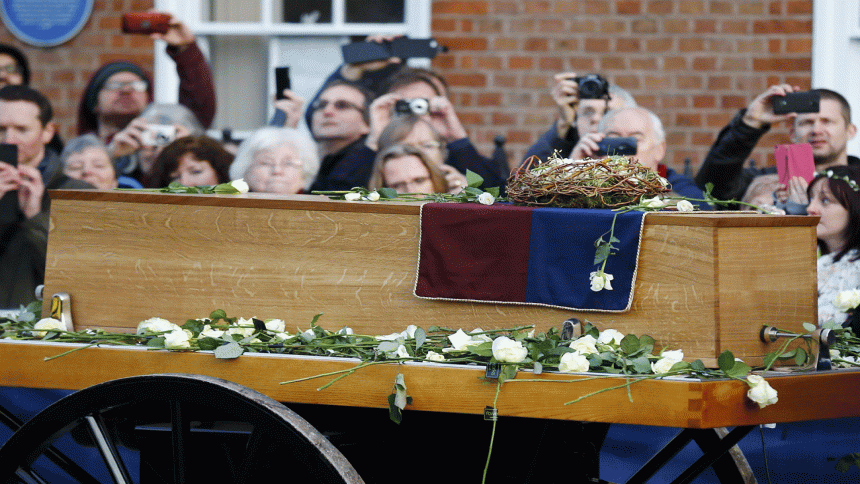
A cortege carrying the remains of King Richard III was welcomed by thousands of people in the city of Leicester on Sunday after a last journey to the nearby battlefield where he was slain 530 years ago.
Discovered under a car park in 2012, Richard's remains will be buried in a tomb fit for a royal at Leicester cathedral on Thursday in a ceremony led by Archbishop of Canterbury Justin Welby, the spiritual head of the Anglican Church, and members of the royal family.
People waving home-made flags and holding white roses, the symbol of Richard's house of York, lined Leicester's streets, determined to see the first king in British history to be exhumed and reburied.
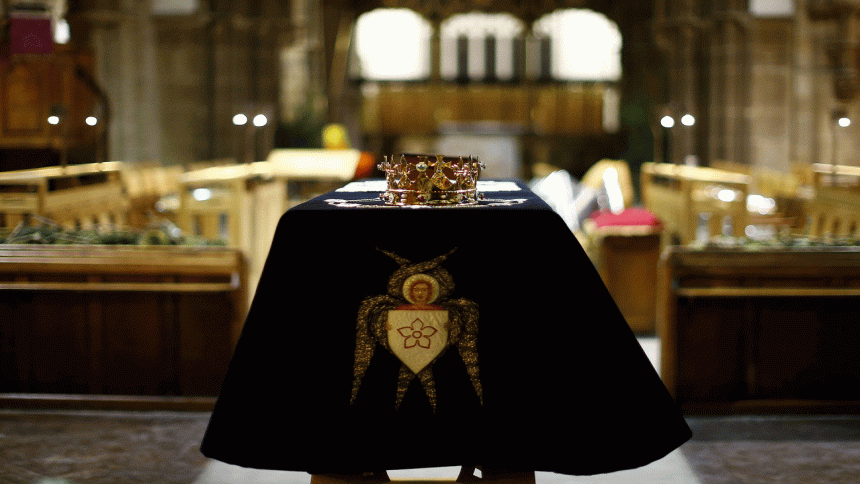
Richard was killed at Bosworth Field in 1485. He was the last English king killed in battle and his death marked the end of the War of the Roses and the beginning of the Tudor dynasty.
His reburial has not been without controversy.
Arguments about whether he should be buried in his ancestral home, York, or in Leicester, have raged since his remains were dug up, ending in a high court battle between the Plantagenet Alliance, a group which included some of Richard's distant descendants, and Leicester's university and council.
Leicester won.
Battle of Bosworth
On Sunday, Richard's body left the University of Leicester where it has been since the discovery, accompanied by the team who made the find, in an oak coffin designed by a direct descendent, Canadian carpenter Michael Ibsen.
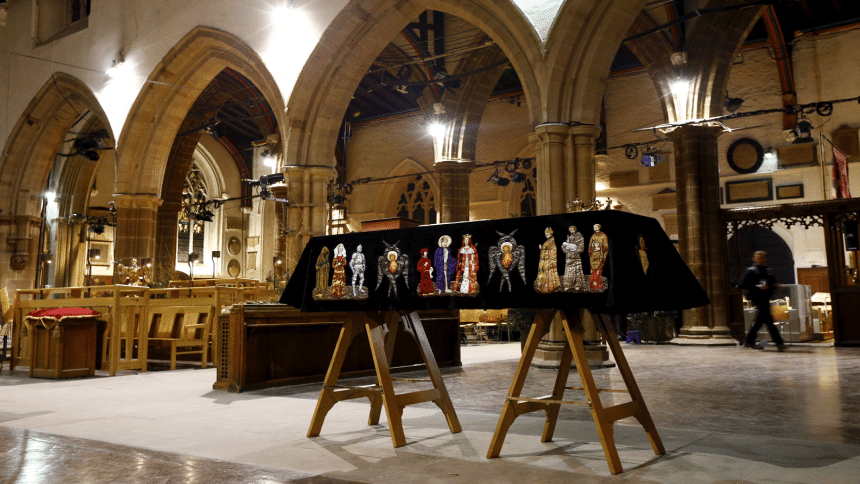
Richard was carried in a hearse to Fenn Lane Farm in the village of Dadlington, the site believed to be the closest to where he fell fighting to hold onto his crown against the invading forces of Henry Tudor, later King Henry VII.
The procession also passed the Bosworth Battlefield Heritage Centre and a number of villages, where short services were held, before entering Leicester where the coffin was transferred to a horse-drawn hearse for the journey to the cathedral.
Leicestershire resident Jed Jaggard, watching the procession dressed as a Yorkshire soldier, said he was a "Yorkist".
"Richard III is a bit of a hero of mine," he said. "He's a much misunderstood king, and so I want to be part of the day and remember him in a way which is fitting for such a towering figure in English history."
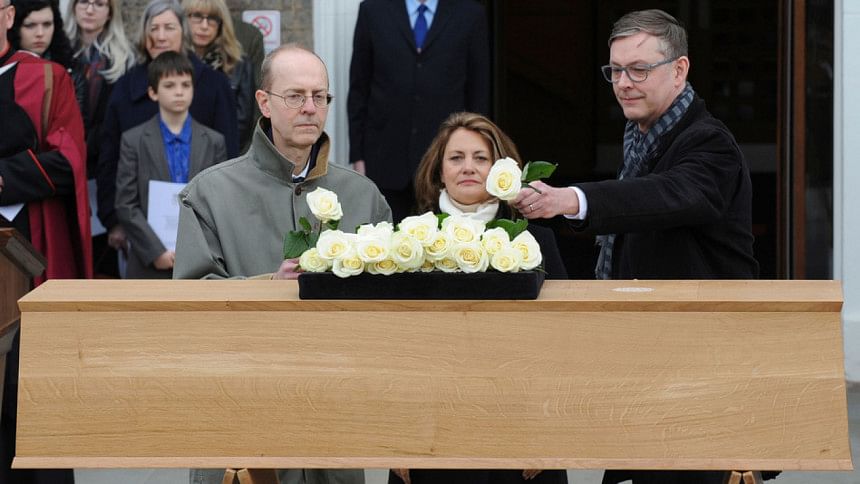
William Shakespeare depicted Richard as a tyrannical, hunchbacked, bloodthirsty monster who murdered his way to the throne on the death of his brother Edward IV and famously went down fighting to keep his crown crying out "A horse! A horse! My kingdom for a horse!".
Among his alleged victims were former King Henry VI, another of his brothers, and his own nephews, or the "Princes in the Tower", one of them 12-year-old Edward V, the rightful king.
However, Philippa Langley, a screenwriter who led the search for Richard III, said he would be seen in a new light after the discovery of his body reiginited interest in the period.
"It's got people talking and it's got people debating and it's got people reading widely about Richard III, and realising that there's far more to this man than people ever knew," she said.
Mystery
After his death, Richard's body was taken to the Grey Friars Church in the nearby city of Leicester and buried in a hastily dug grave which was too small to house his body.
The location of his grave became a mystery until it was found under a municipal car park in a discovery which stunned archaeologists and captivated the world.
Sarah Badders, a 69-year-old American who travelled from Arkansas for the event, was desperate to see Richard receive the regal recognition supporters say Henry VII denied him.
"It's indescribable, indescribable to know he's been in the dirt for 500 years and here he is being almost worshiped by millions of people around the world," she said.
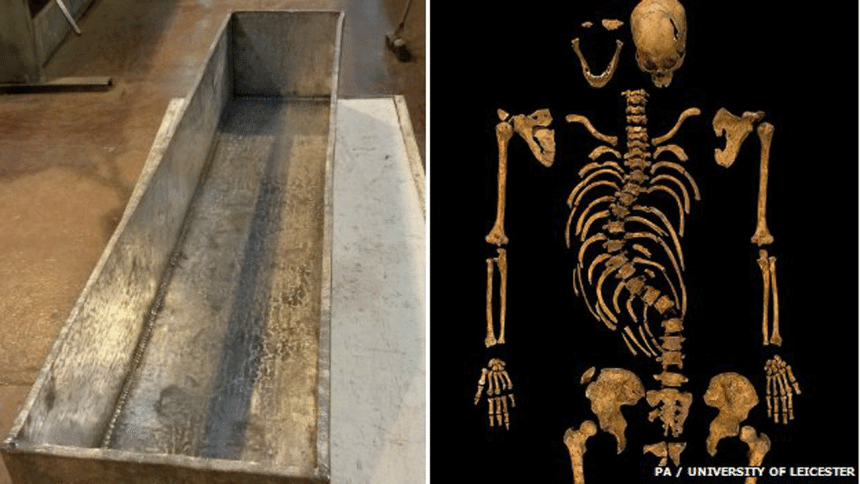
The king's final journey culminated in a service in Leicester Cathedral on Sunday evening, at which Britain's most senior Roman Catholic churchman, Cardinal Vincent Nichols, Archbishop of Westminster, preached.
A crown made of base metal, like the one Richard was said to have worn on the last day of his life, was placed on the coffin, according to the order of service.
On Monday, the cardinal archbishop will say a mass for Richard in the city's Holy Cross Church.
The public can view the coffin for the next few days before the remains will be reinterred at the cathedral on Thursday.

 For all latest news, follow The Daily Star's Google News channel.
For all latest news, follow The Daily Star's Google News channel. 



Comments